This question focuses on the switching of inductive loads at a relatively long distance, specifically on handling the inductive kickback as a result of switching. The inductive load in question is an electromagnet/solenoid, which has a nominal resistance of 75 ohms and draws about 200 mA current when switched on.
The switching circuitry consists of an NMOS/PMOS transistor pair configuration that acts as a high side switch for the solenoid. This switching circuitry is controlled by a microcontroller unit (MCU). Details on this switching mechanism is, for the sake of this discussion, not provided in detail, as the focus is not on this, but rather on the inductive kickback resulting from switching the solenoid on and off.
A broad overview of the layout of the system is depicted in the figure below:
As depicted in the figure above, a transformer converts 3-phase 380 VAC down to 14 VDC (thus, the output of the transformer is rectified). This output of the transformer is what powers all parts of the system in question. There is a set of solenoids spread throughout the system, which is split into three groups for the sake of this discussion. The solenoids are connected in a common-negative configuration, i.e. one of the terminals of each of the solenoids is connected to GND (the negative terminal of the transformer's output). More specifically, a single conductor spans from the transformer to the room where the solenoids are situated. From this conductor, another single conductor is "tapped off" for each of the sets of solenoids depicted in the figure above (denoted by the three "GND wires" connections in the figure above). Each of these (three) conductors are situated along each set of solenoids in such a way that smaller wires are "tapped off" from it in order to provide the connections to GND for each of the solenoids.
The other "positive" terminals of each of the solenoids are all terminated in a connection block (Krone block), where the switching signals are also connected for each corresponding solenoid. These switching signals are essentially the "positive" connections to the solenoids that activates/de-activates the solenoids, based on the state of the switching circuitry for each solenoid.
Another single conductor from the transformer's negative (GND) terminal leads to the control circuitry, along with another conductor that is connected to the positive terminal of the transformer (thus, these two conductors are the two power cables that provides power to the control circuitry). Power to the control circuitry logic and MCU is derived from this input from the transformer by using voltage regulators. There is therefore a single 14 VDC and GND connection from the transformer to the control circuitry.
It should at this stage be mentioned that the solenoids, control/switching circuitry and transformer are all positioned in separate smaller rooms in the building space. Furthermore, the solenoids are placed in such a fashion that direct access to them is rather difficult. Thus, it is impractical to mount any flyback diodes directly on each of the solenoids' terminals. Thus, any connecting of any sort of component directly at the solenoids' terminals is not an option at all.
The figure below illustrates the connection method for each of the solenoids. Note in particular the length of the wires to and from the solenoid. The LED is used solely to visually indicate the state of the switching circuit (thus, if the solenoid is switched on or off). The Schottky diode (which is the flyback diode), along with the LED is placed in very close proximity to the rest of the switching circuitry.
It should be noted that the whole of the switching circuitry and its corresponding switching logic (and MCU) shares the same GND connection over the PCB it is located. More specifically, the PCB "fill" is essentially a GND plane and any GND connections for any logic circuitry, switching circuitry and the MCU is directly connected to this GND plane.
My question is the following: Considering the fact the flyback diode can only be located at the control/switching circuitry side, thus in close proximity to the switching circuitry but far away (2-10 m) from the solenoid itself, what would be the best option of laying out the tracks on the PCB for the flyback diode? My intuition tells me that the redirected current resulting from the inductive kickback (when switching the solenoid off) flows in the following order:
- From the "positive" terminal of the solenoid, through the solenoid itself,
- out of the solenoid's GND terminal,
- back to the transformer via the common GND conductor shared between the solenoids,
- from the transformer all the way to the control/switching circuitry via its single GND wire,
- through the flyback diode via the GND plane, and then again
- to the solenoid's "positive" terminal.
This can cause significant ground bounce on the whole of the PCB's GND plane and upset all of the logic circuitry components and the MCU. Do I understand this correctly?
Would the best option be to have another dedicated conductor from the transformer's GND terminal to the control PCB, to which ONLY the connection(s) from flyback diode(s) are connected to provide a dedicated path for the solenoid kickback current? If such a conductor is added, wouldn't some of the kickback current still propagate through the other GND wire that forms part of the PCB's power connection? How can the negative effect of ground bounce be limited to only a single dedicated path that is separate from the rest of the circuitry, so that the rest of the circuitry is not affected?
